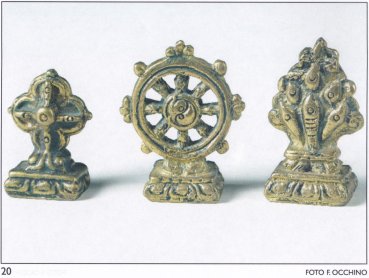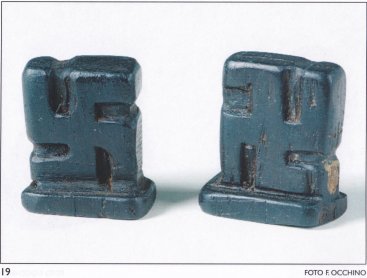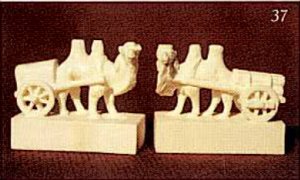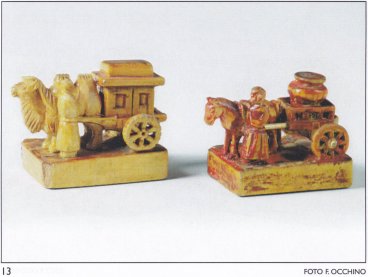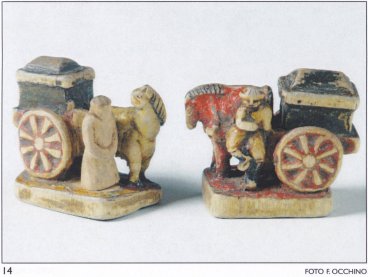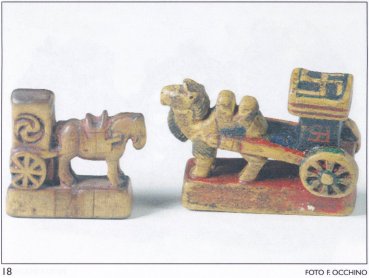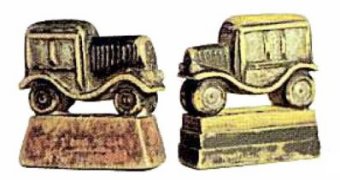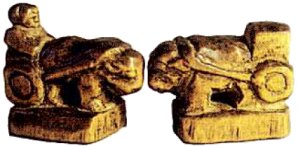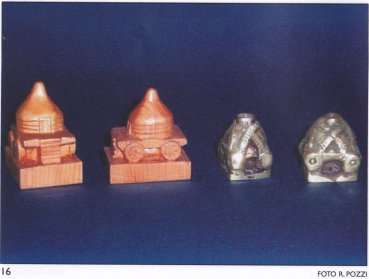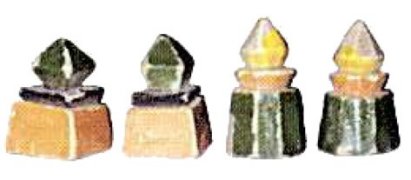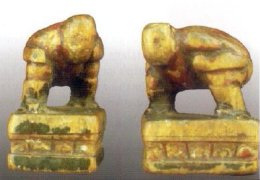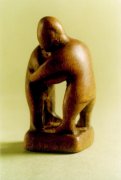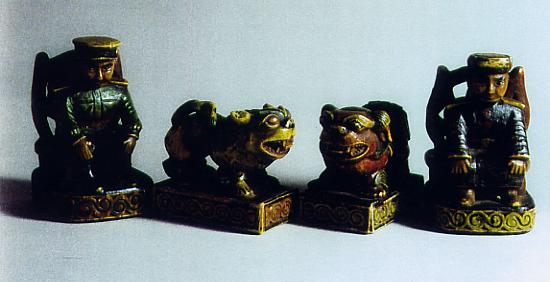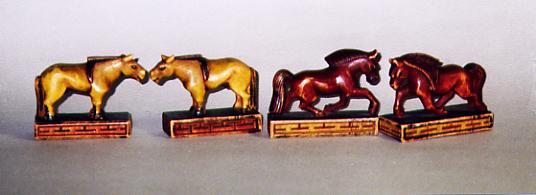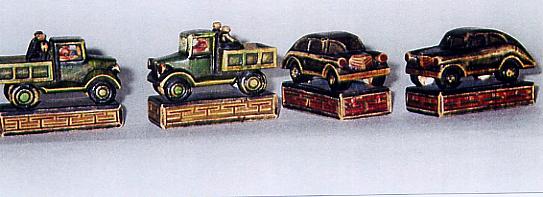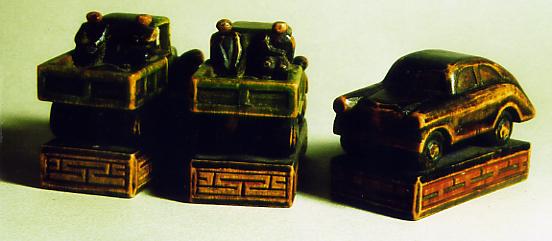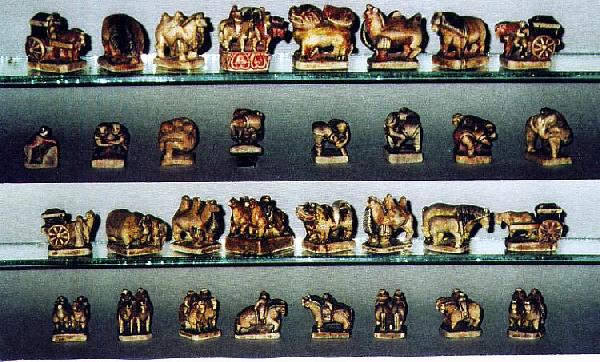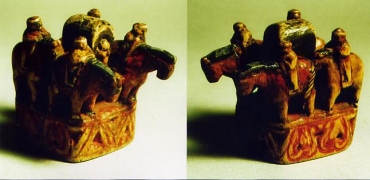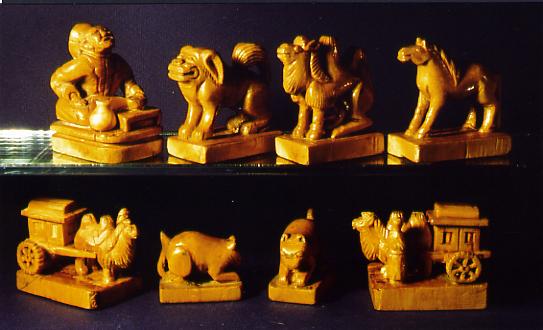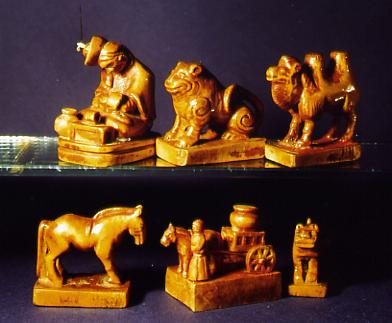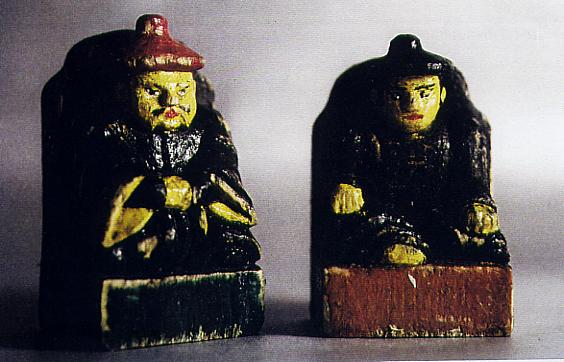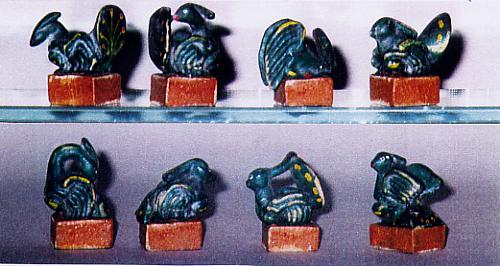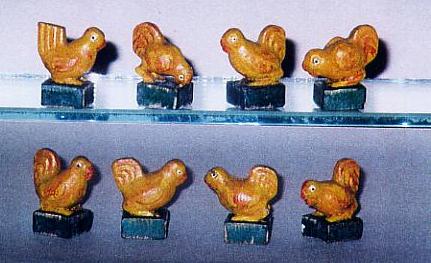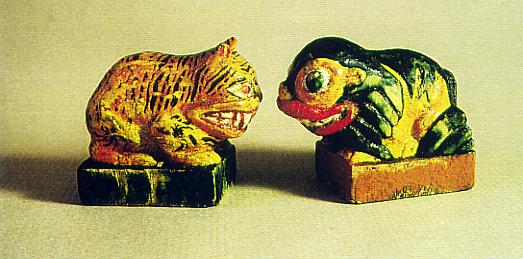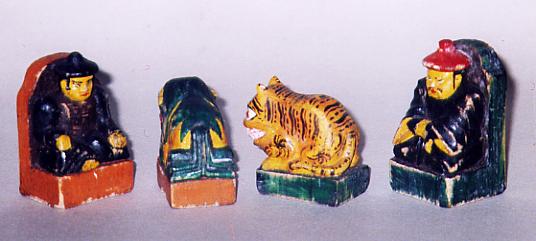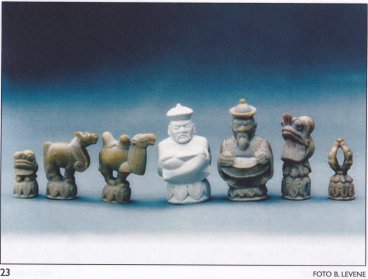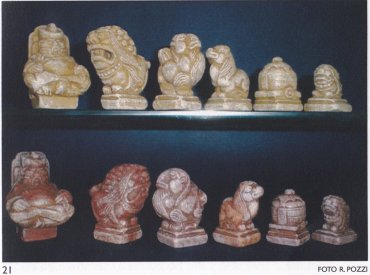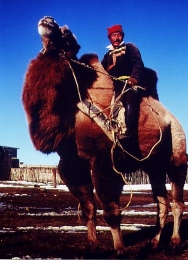More about Shatar, the Mongolian Chess
This page contains more illustrations about Shatar, the Mongolian Chess. All of them have been provided to me by Rodolfo Pozzi (or borrowed from his on-line articles) who is deeply acknowledged. Rodolfo Pozzi is Italian and is a Chess set collector. He is the author of several booklets and papers about Chess history and he is a recognized expert of Mongolian Chess.

Game of Shatar inside the yurte
The Nojon (Noyion): equivalent to the King.
The Bers: equivalent to the Queen.
The Temee: equivalent to the Bishop.
|
|
|
|
|
|
|
|
|
The Mor' (Mori): equivalent to the Knight.
The Tereg (Terghe): equivalent to the Rook.
|
|
|
|
|
|
|
|
|
|
|
|
|
|
|
The Xüü (Huu): equivalent to the Pawn.
|
|
|
|
|
|
A set opposing Mongolian communists to Russian soviets (1936):
|
|
|
|
|
|
|
|
Old wooden set made when Mongolia was controlled by the Mandchu Qing dynasty of China (circa 1790):
|
|
|
|
|
|
Wooden set with "drunk" Nojons (beg. 20th c.):
|
|
|
|
Set opposing the "bad", the
Chinese, to the "good", the Mongolian
(wood, Inner Mongolia beg. of 20th c.):
|
|
|
|
|
|
|
|
|
|
|
|
|
|
|
|
Other complete sets:
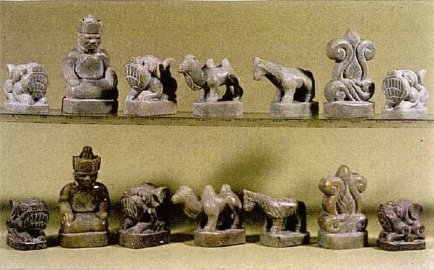

Soapstone (steatite) sets from Tuva
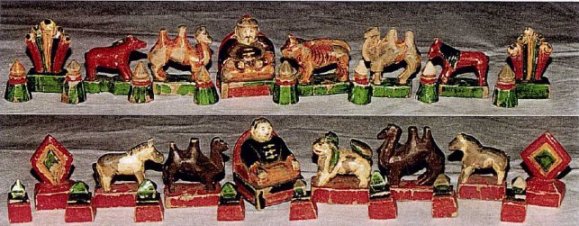
(Musée de l'Homme, Paris)

(Assia Popova)

Wooden set with musician Nojons, Mongolia, 1960

Wooden set (1850)

Wooden set from Mongolia, 1950

Here the Nojon bears a chessboard. The Tereg is a cart
pulled by an elephant.
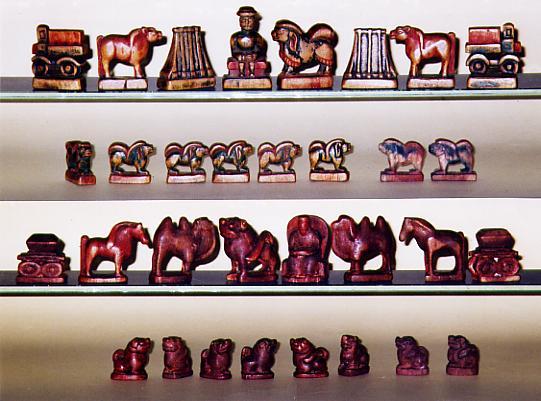
Wooden set with tents instead of camels for
one side (top)
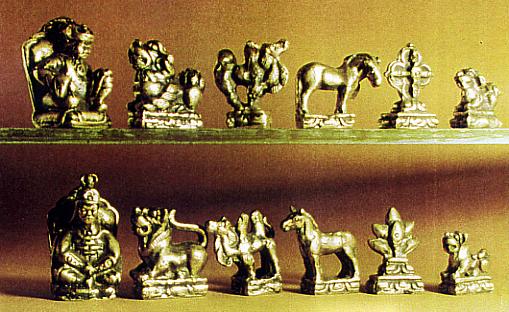
Metallic set opposing aggressive versus pacific (20th
c.)
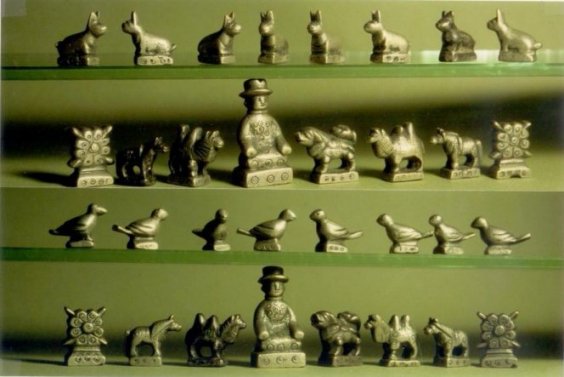
Metal set

Metal set
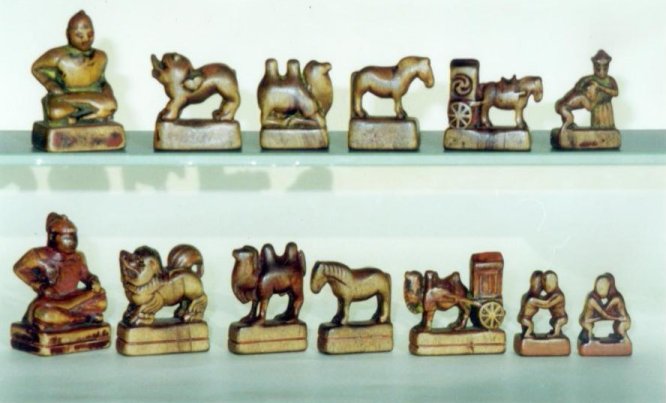
Wooden set
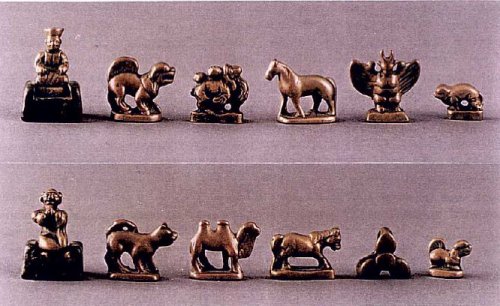
Metal sets with Garuda as
Tereg-Rook (Thomas Thomsen)


Ivory set
References authored by Roldolfo Pozzi:
-
"I giochi di schacchi mongoli riflesso della cultura nomade delle steppe - The Mongolian chess sets reflecting the nomadic culture of the steppes", Chess Collectors International, 10th Biennal Convention, Philadelphia, USA, May 2002.
-
"The Mongolian and Tuvinian Chess sets and their symbolism", Chess Collectors International, 8th Convention, Vienna, Austria, May 1998.
-
"Les jeux d'échecs mongols", in Voyage en Mongolie, catalogue d'exposition présentée au Musée international du Carnaval et du Masque, 24 mai - 31 octobre 2003.
-
"Novita' nella ricerca sui giocchi di scacchi della Mongolia - Mongolian chess set: recent findings", bilingual (Italian-English), in The Chess Collector, Vol. XIII, N.1, Spring 2004.
-
"Gli scacchi mongoli", Soyombo, Autumn 2003, Milano.
-
"Gli scacchi della Mongolia", I quaderni del museo, Museo popoli e culture, 14/03/2009-14/06/2009, Milano








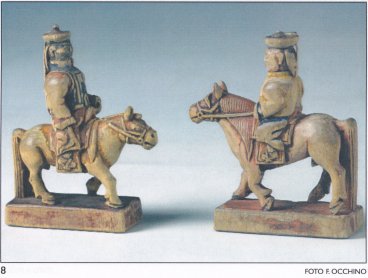
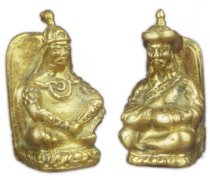


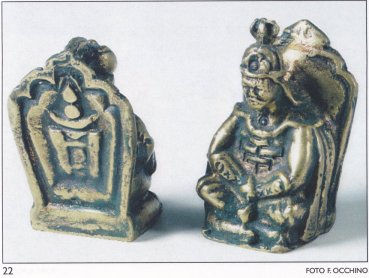


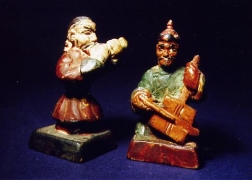
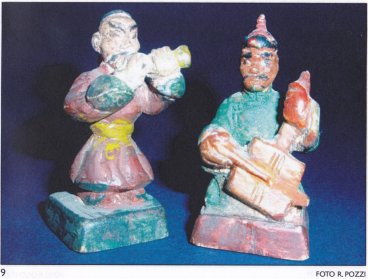

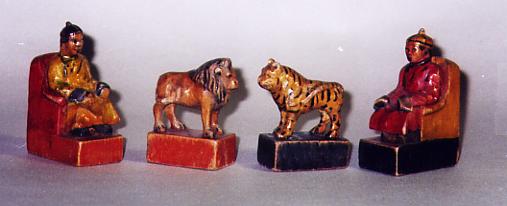












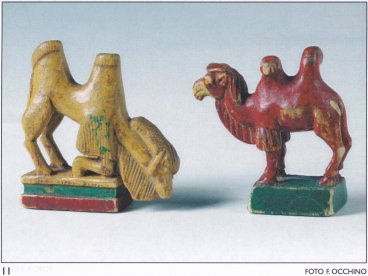








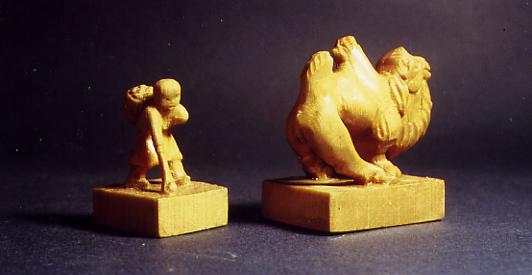
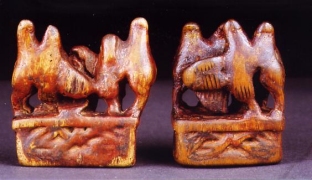


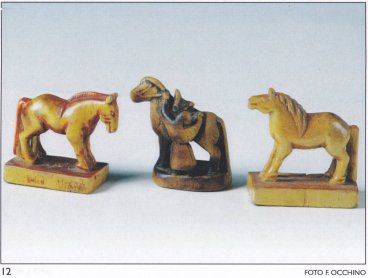

 Losanges and peacock tails (Musée de
l'Homme, Paris)
Losanges and peacock tails (Musée de
l'Homme, Paris)

